Ontology-based sentiment analysis for brand crisis detection on online social media
ABSTRACT
Social media is emerging as a popular channel for online marketing. Nowadays, there more and
more brands those are using social media to track and care for their brand health. Especially, social
media is a source and also an important channel for brands to take care of their brands. On social
media, things can move quickly due to viral information spread among the audience. Thus, a robust and automatic method for detecting crisis and even stop the crisis before it starts is urgently
demanded.This paper discusses detection of brand crisis on online social media, i.e. when a brand
is being suffered from unexpectedly high frequency of negative comments on online channels
such as social networks, electronic news, blog and forum. In order to do so, we combined the usage of probabilistic model for burst detection with ontology-based aspect-level sentiment analysis
technique to detect negative mention. The burst on online environment is a trendy topic that is
rapidly growing recently, whereas the sentiment analysis process helps to identify the opinion of
the audience regarding the brands. By combining domain knowledge captured in the ontology,
we can make the analysis process focused on certain domains when needed. Also, the ontological
concepts can also improve the accuracy of sentiment analysis at the aspect level.To evaluate the
performance of our approach, we collect real data from online social media channels in Vietnam,
which are provided by YouNet Media, a professional online data analysis company. Our experimental results show that the aspect-level sentiment analysis technique is extremely useful for detecting
of negative mentions that related with the products and brands. Based on the achieved results,
commercial products and platforms can be seriously considered
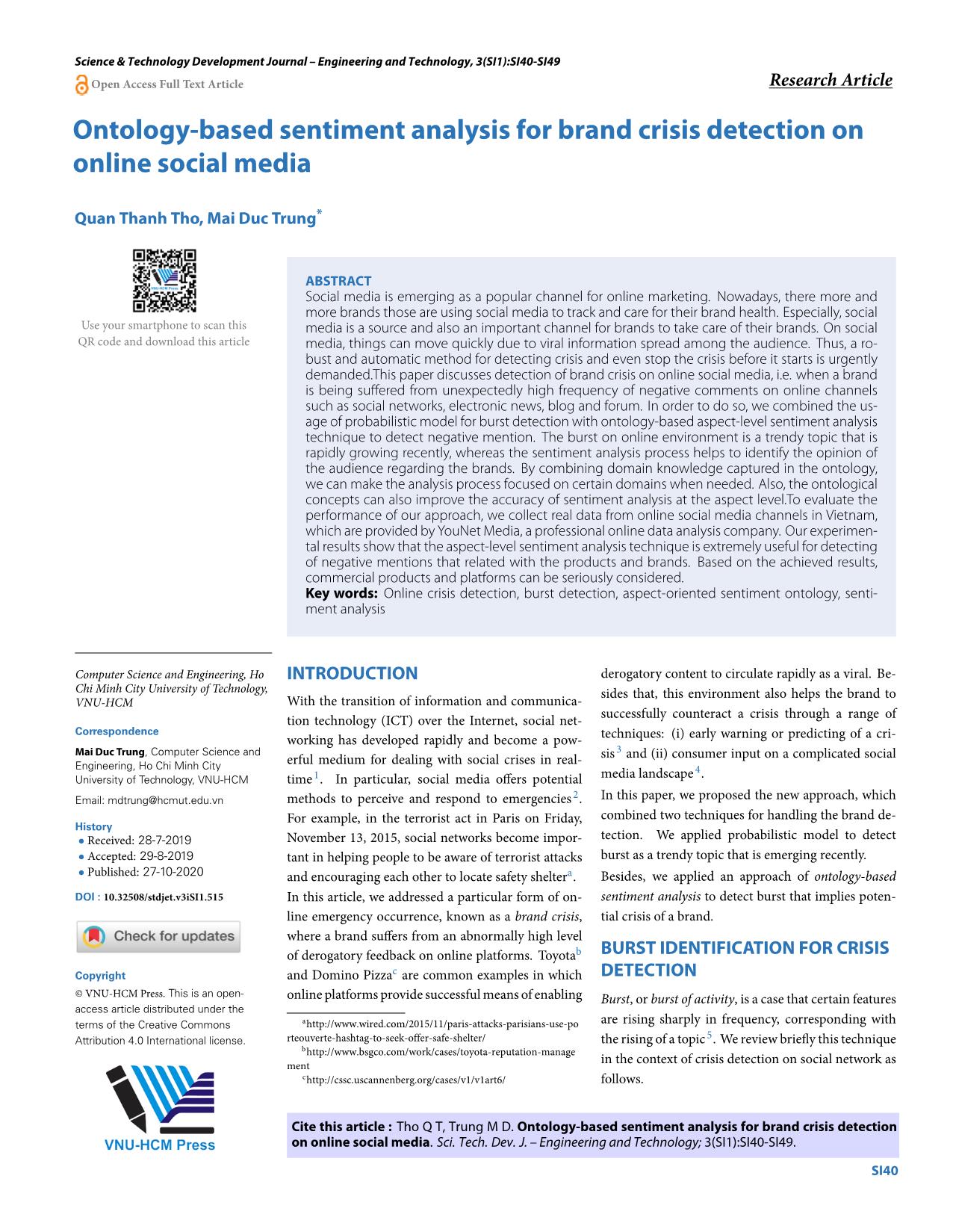
Trang 1
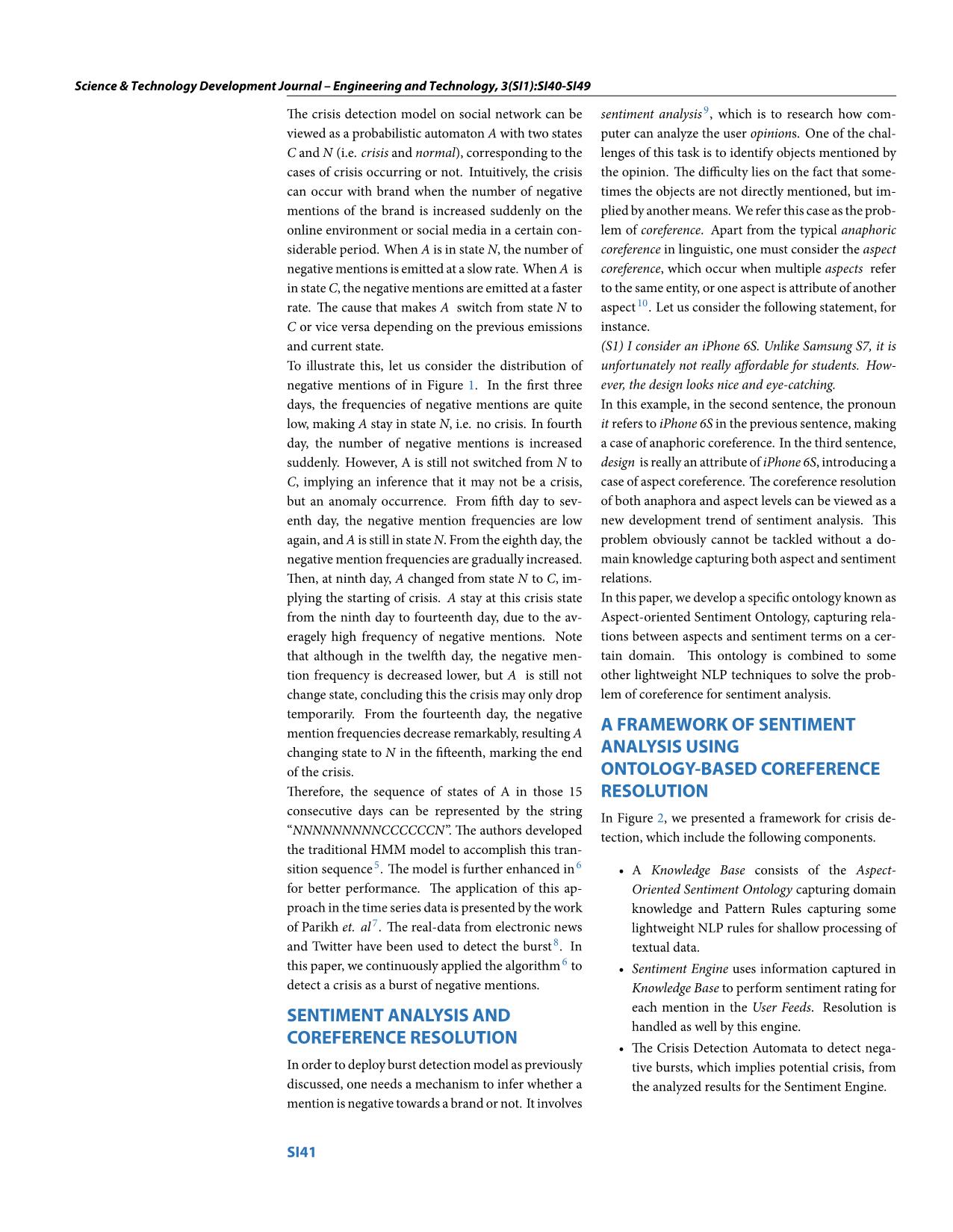
Trang 2
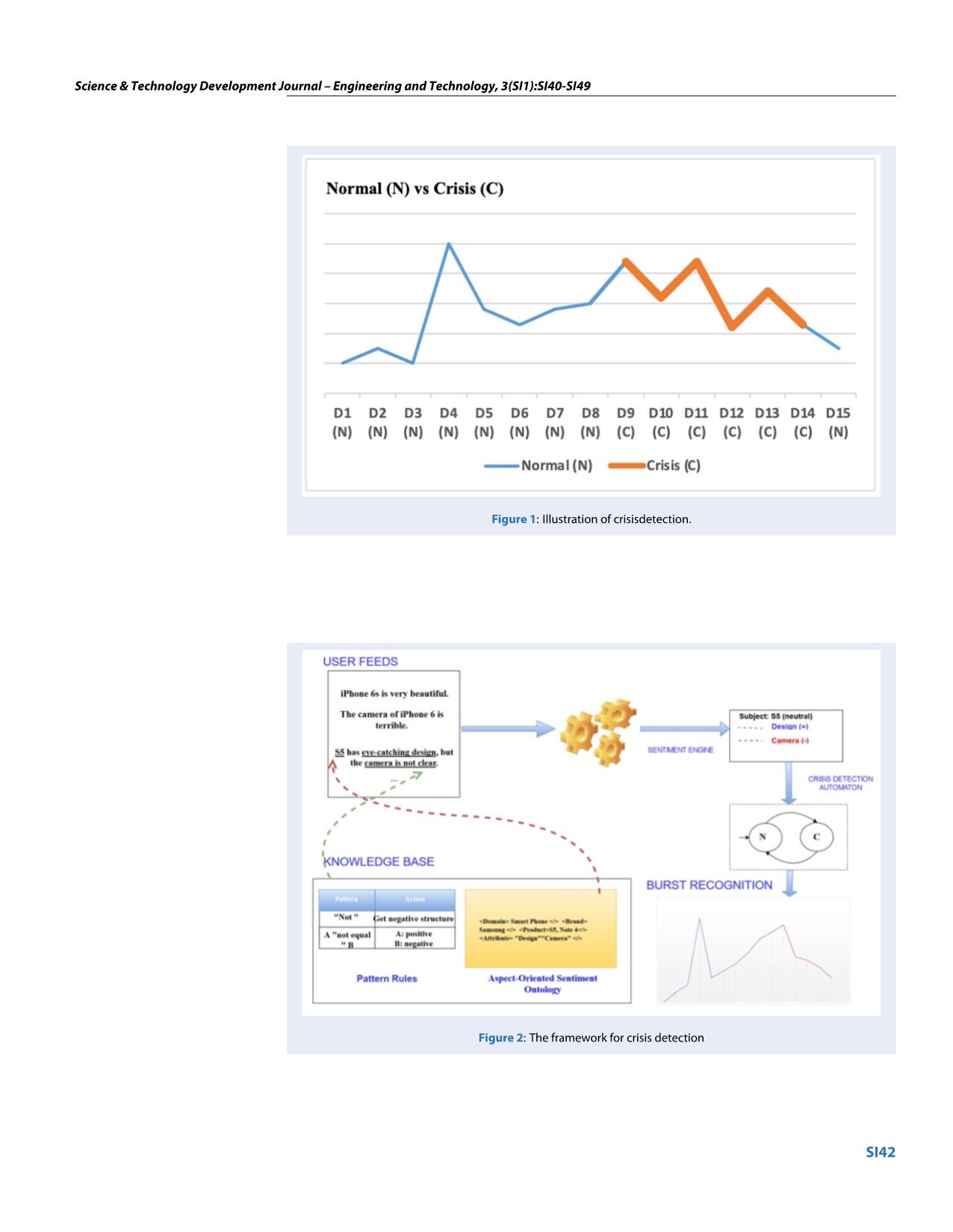
Trang 3
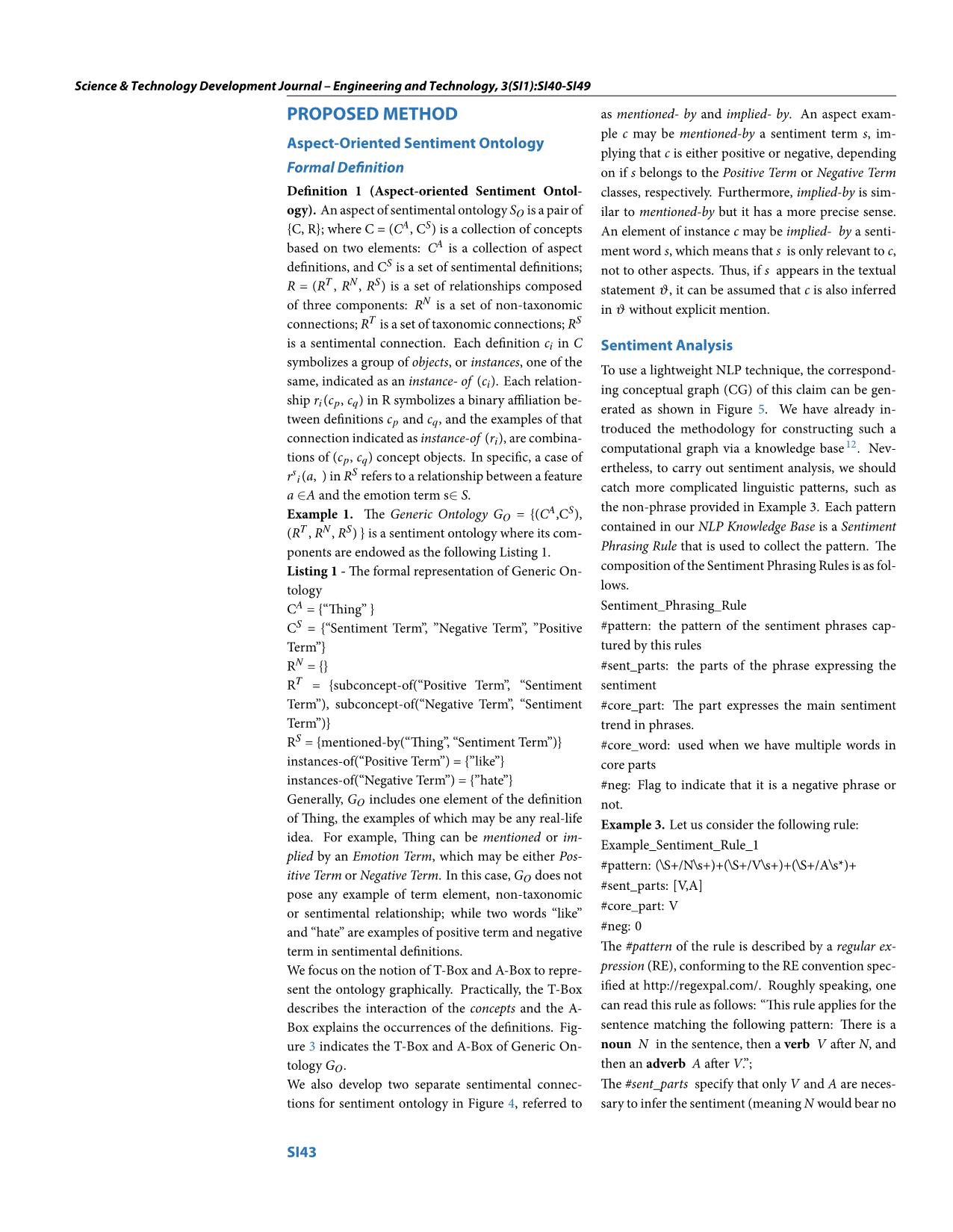
Trang 4
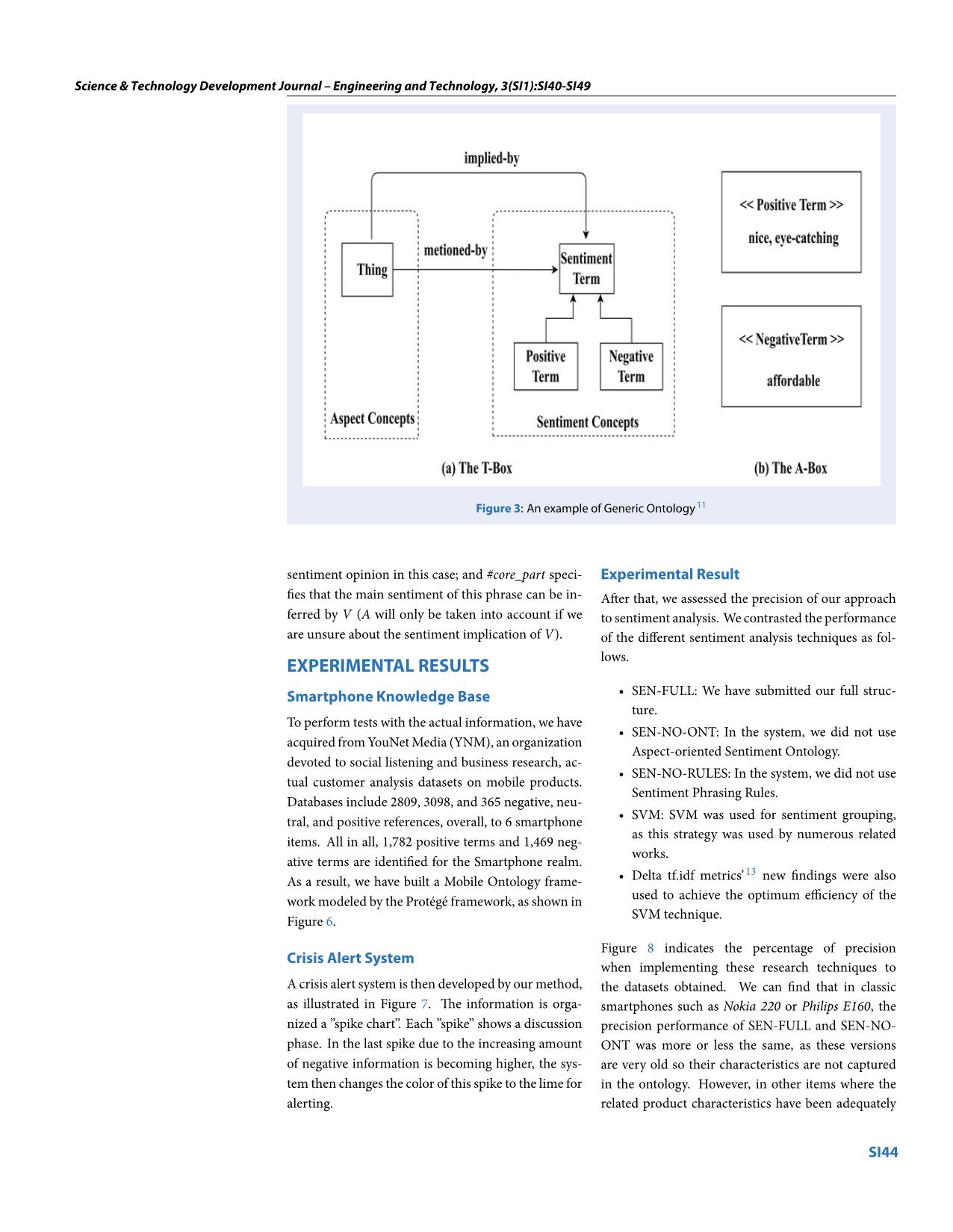
Trang 5
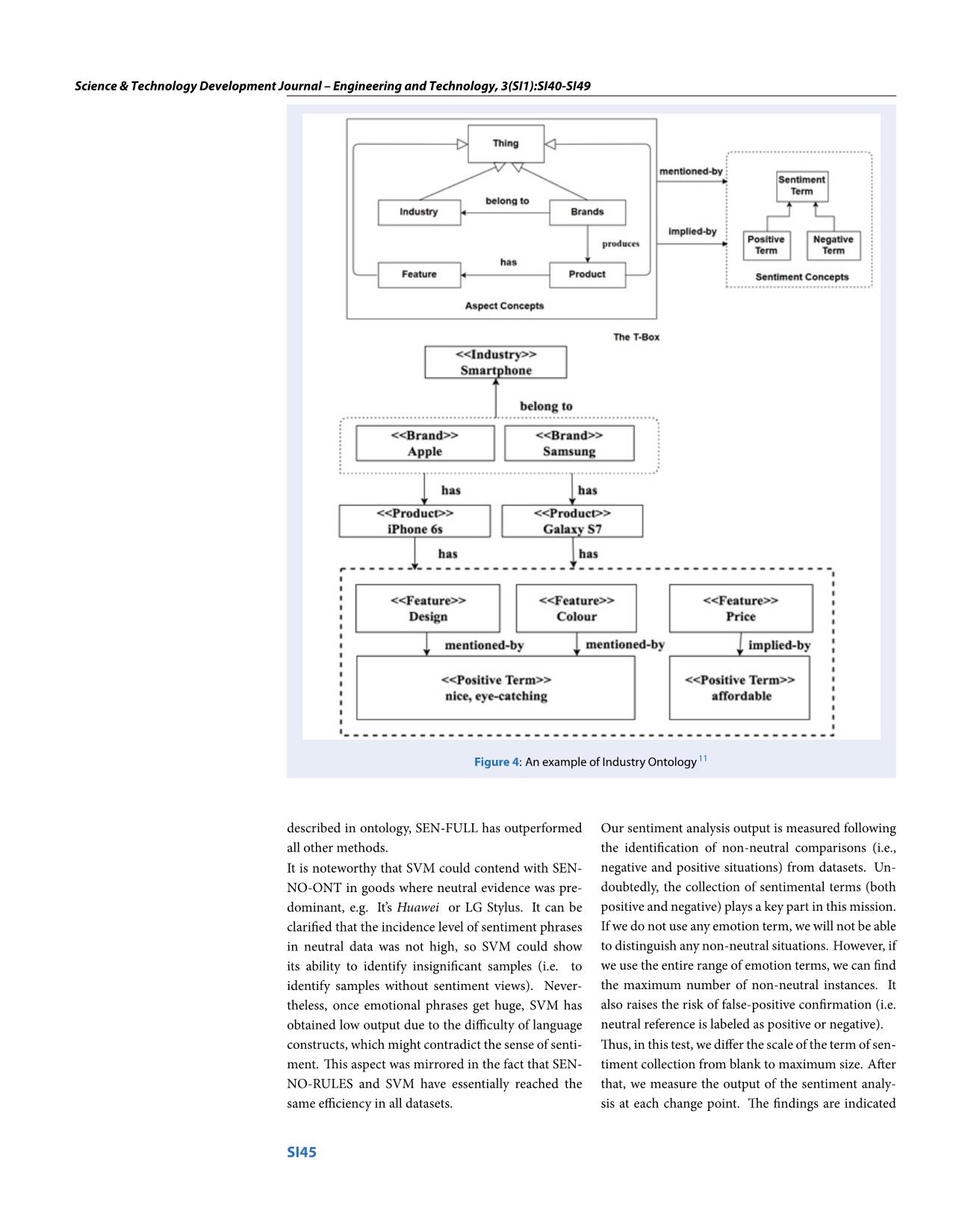
Trang 6
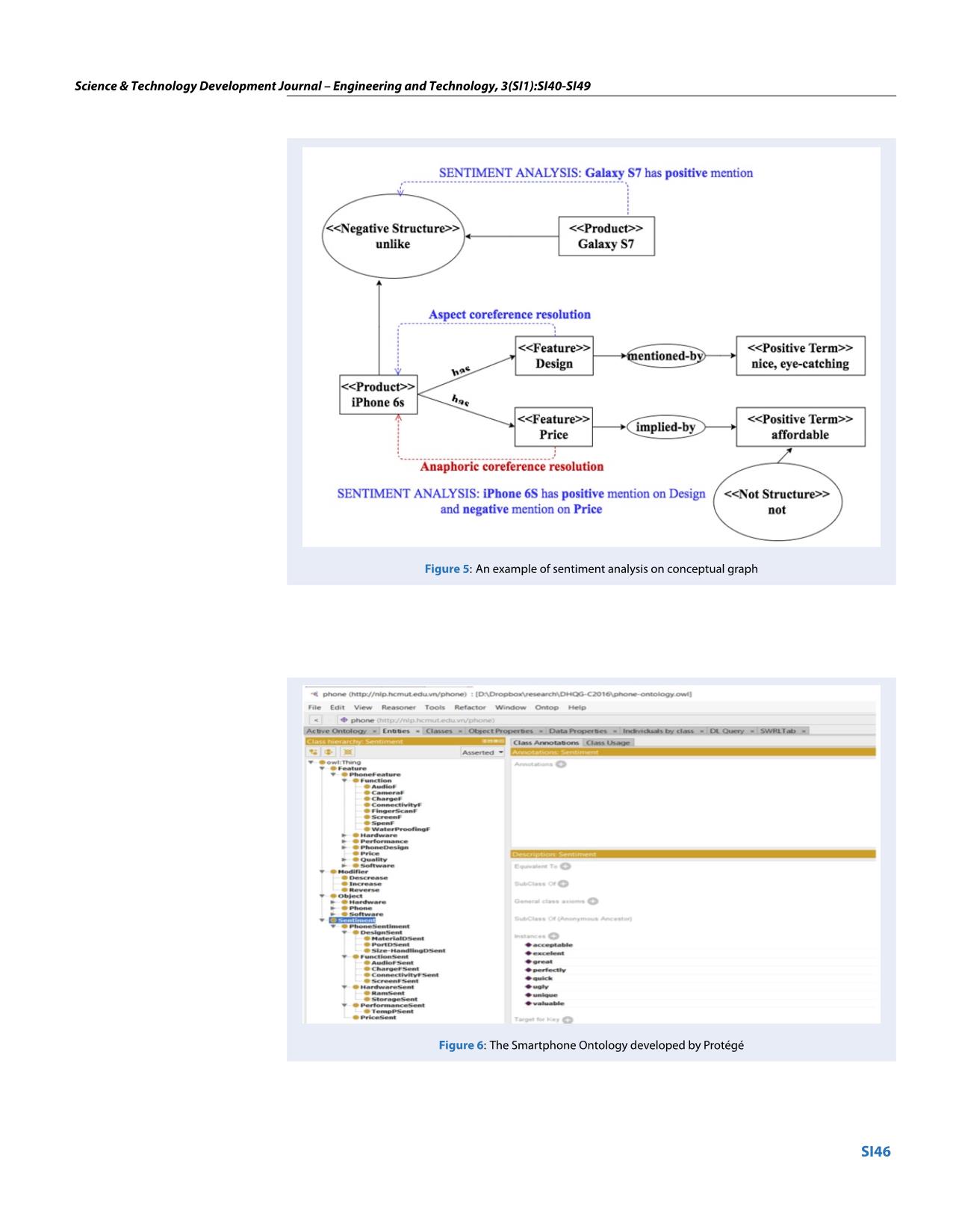
Trang 7
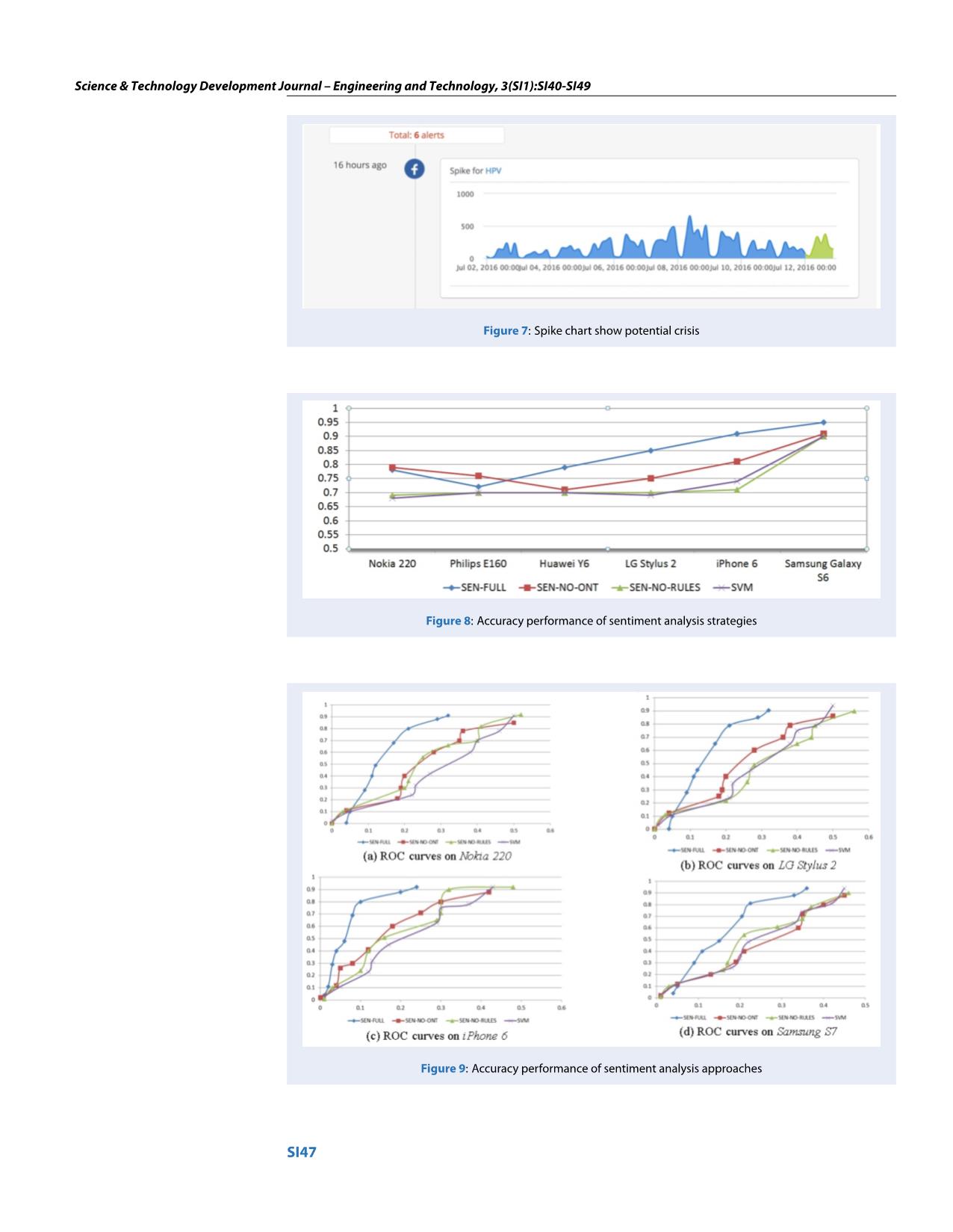
Trang 8
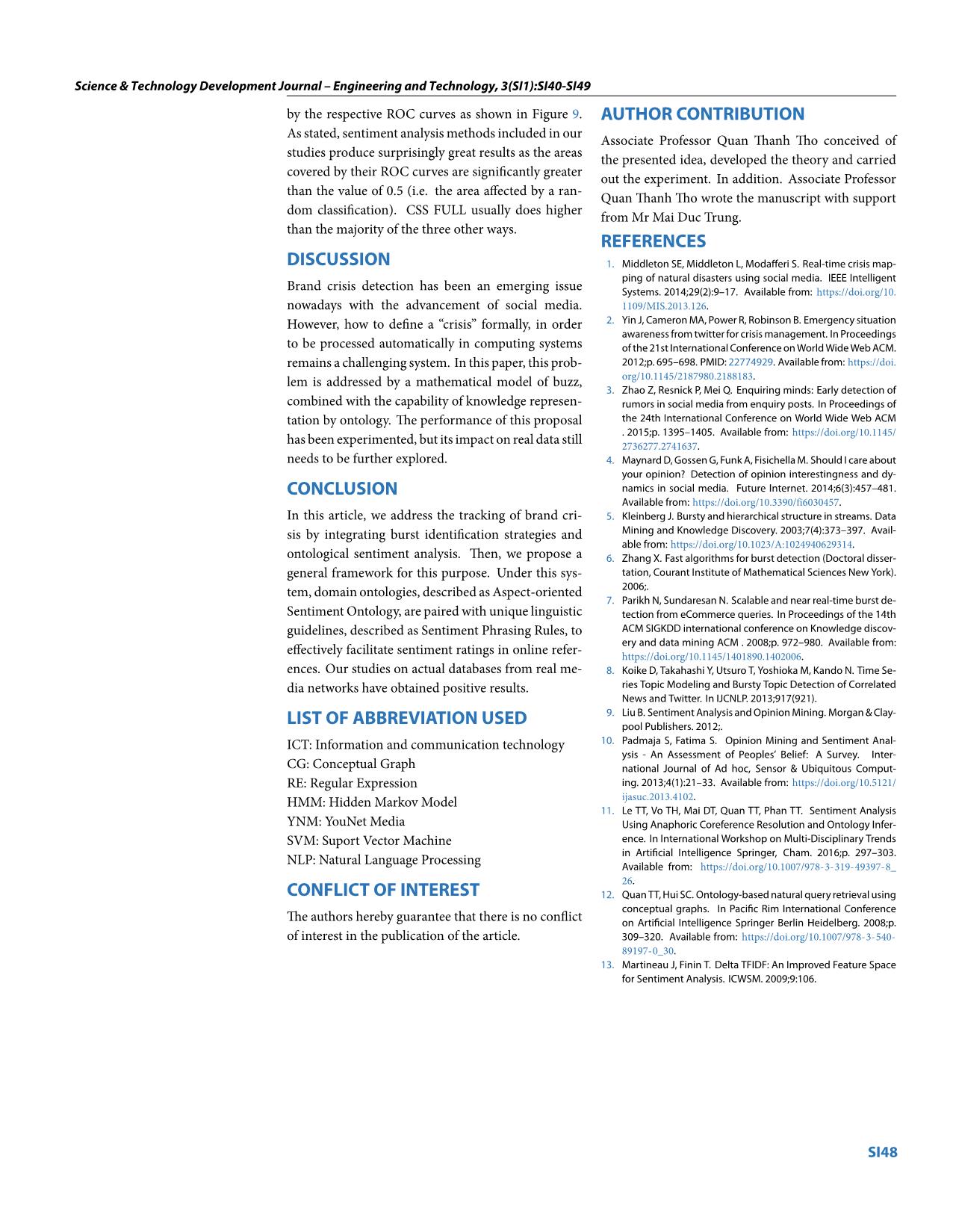
Trang 9
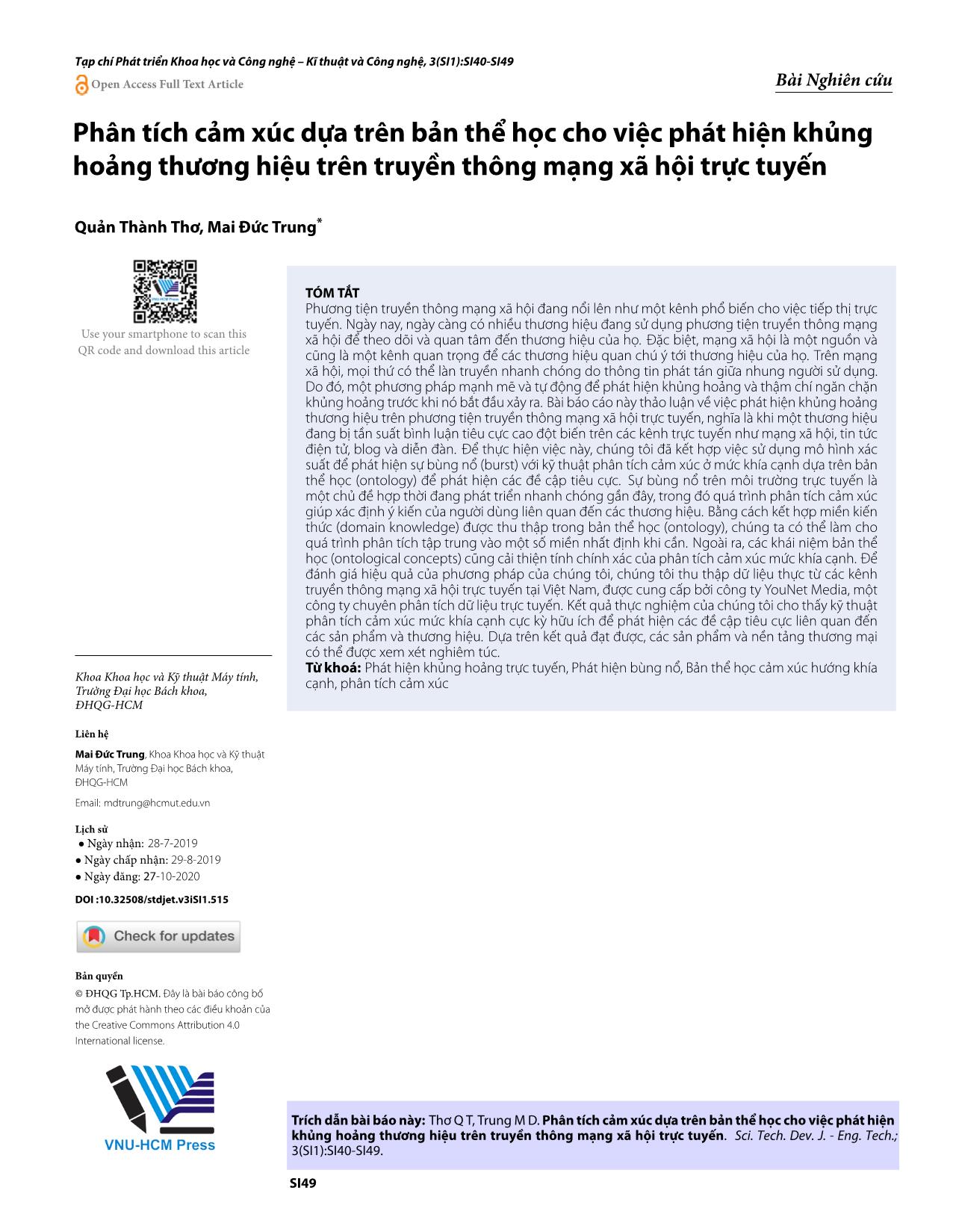
Trang 10
Tóm tắt nội dung tài liệu: Ontology-based sentiment analysis for brand crisis detection on online social media
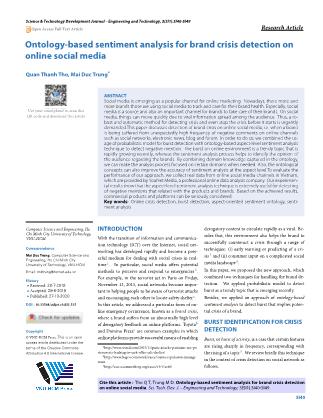
phrases cap-
Term”} tured by this rules
RN = {} #sent_parts: the parts of the phrase expressing the
RT = {subconcept-of(“Positive Term”, “Sentiment sentiment
Term”), subconcept-of(“Negative Term”, “Sentiment #core_part: The part expresses the main sentiment
Term”)} trend in phrases.
S
R = {mentioned-by(“Thing”, “Sentiment Term”)} #core_word: used when we have multiple words in
instances-of(“Positive Term”) = {”like”} core parts
instances-of(“Negative Term”) = {”hate”} #neg: Flag to indicate that it is a negative phrase or
Generally, GO includes one element of the definition not.
of Thing, the examples of which may be any real-life Example 3. Let us consider the following rule:
idea. For example, Thing can be mentioned or im-
Example_Sentiment_Rule_1
plied by an Emotion Term, which may be either Pos-
#pattern: (\S+/N\s+)+(\S+/V\s+)+(\S+/A\s*)+
itive Term or Negative Term. In this case, GO does not
#sent_parts: [V,A]
pose any example of term element, non-taxonomic
#core_part: V
or sentimental relationship; while two words “like”
and “hate” are examples of positive term and negative #neg: 0
term in sentimental definitions. The #pattern of the rule is described by a regular ex-
We focus on the notion of T-Box and A-Box to repre- pression (RE), conforming to the RE convention spec-
sent the ontology graphically. Practically, the T-Box ified at Roughly speaking, one
describes the interaction of the concepts and the A- can read this rule as follows: “This rule applies for the
Box explains the occurrences of the definitions. Fig- sentence matching the following pattern: There is a
ure 3 indicates the T-Box and A-Box of Generic On- noun N in the sentence, then a verb V after N, and
tology GO. then an adverb A after V.”;
We also develop two separate sentimental connec- The #sent_parts specify that only V and A are neces-
tions for sentiment ontology in Figure 4, referred to sary to infer the sentiment (meaning N would bear no
SI43
Science & Technology Development Journal – Engineering and Technology, 3(SI1):SI40-SI49
Figure 3: An example of Generic Ontology 11
sentiment opinion in this case; and #core_part speci- Experimental Result
fies that the main sentiment of this phrase can be in- After that, we assessed the precision of our approach
ferred by V (A will only be taken into account if we to sentiment analysis. We contrasted the performance
are unsure about the sentiment implication of V). of the different sentiment analysis techniques as fol-
EXPERIMENTAL RESULTS lows.
Smartphone Knowledge Base • SEN-FULL: We have submitted our full struc-
ture.
To perform tests with the actual information, we have
• SEN-NO-ONT: In the system, we did not use
acquired from YouNet Media (YNM), an organization
Aspect-oriented Sentiment Ontology.
devoted to social listening and business research, ac-
• SEN-NO-RULES: In the system, we did not use
tual customer analysis datasets on mobile products.
Sentiment Phrasing Rules.
Databases include 2809, 3098, and 365 negative, neu-
• SVM: SVM was used for sentiment grouping,
tral, and positive references, overall, to 6 smartphone
as this strategy was used by numerous related
items. All in all, 1,782 positive terms and 1,469 neg-
works.
ative terms are identified for the Smartphone realm.
13
As a result, we have built a Mobile Ontology frame- • Delta tf.idf metrics’ new findings were also
work modeled by the Protégé framework, as shown in used to achieve the optimum efficiency of the
SVM technique.
Figure 6.
Figure 8 indicates the percentage of precision
Crisis Alert System
when implementing these research techniques to
A crisis alert system is then developed by our method, the datasets obtained. We can find that in classic
as illustrated in Figure 7. The information is orga- smartphones such as Nokia 220 or Philips E160, the
nized a ”spike chart”. Each ”spike” shows a discussion precision performance of SEN-FULL and SEN-NO-
phase. In the last spike due to the increasing amount ONT was more or less the same, as these versions
of negative information is becoming higher, the sys- are very old so their characteristics are not captured
tem then changes the color of this spike to the lime for in the ontology. However, in other items where the
alerting. related product characteristics have been adequately
SI44
Science & Technology Development Journal – Engineering and Technology, 3(SI1):SI40-SI49
Figure 4: An example of Industry Ontology 11
described in ontology, SEN-FULL has outperformed Our sentiment analysis output is measured following
all other methods. the identification of non-neutral comparisons (i.e.,
It is noteworthy that SVM could contend with SEN- negative and positive situations) from datasets. Un-
NO-ONT in goods where neutral evidence was pre- doubtedly, the collection of sentimental terms (both
dominant, e.g. It’s Huawei or LG Stylus. It can be positive and negative) plays a key part in this mission.
clarified that the incidence level of sentiment phrases If we do not use any emotion term, we will not be able
in neutral data was not high, so SVM could show to distinguish any non-neutral situations. However, if
its ability to identify insignificant samples (i.e. to we use the entire range of emotion terms, we can find
identify samples without sentiment views). Never- the maximum number of non-neutral instances. It
theless, once emotional phrases get huge, SVM has also raises the risk of false-positive confirmation (i.e.
obtained low output due to the difficulty of language neutral reference is labeled as positive or negative).
constructs, which might contradict the sense of senti- Thus, in this test, we differ the scale of the term ofsen-
ment. This aspect was mirrored in the fact that SEN- timent collection from blank to maximum size. After
NO-RULES and SVM have essentially reached the that, we measure the output of the sentiment analy-
same efficiency in all datasets. sis at each change point. The findings are indicated
SI45
Science & Technology Development Journal – Engineering and Technology, 3(SI1):SI40-SI49
Figure 5: An example of sentiment analysis on conceptual graph
Figure 6: The Smartphone Ontology developed by Protégé
SI46
Science & Technology Development Journal – Engineering and Technology, 3(SI1):SI40-SI49
Figure 7: Spike chart show potential crisis
Figure 8: Accuracy performance of sentiment analysis strategies
Figure 9: Accuracy performance of sentiment analysis approaches
SI47
Science & Technology Development Journal – Engineering and Technology, 3(SI1):SI40-SI49
by the respective ROC curves as shown in Figure 9. AUTHOR CONTRIBUTION
As stated, sentiment analysis methods included in our
Associate Professor Quan Thanh Tho conceived of
studies produce surprisingly great results as the areas
the presented idea, developed the theory and carried
covered by their ROC curves are significantly greater
out the experiment. In addition. Associate Professor
than the value of 0.5 (i.e. the area affected by a ran-
Quan Thanh Tho wrote the manuscript with support
dom classification). CSS FULL usually does higher
from Mr Mai Duc Trung.
than the majority of the three other ways.
REFERENCES
DISCUSSION 1. Middleton SE, Middleton L, Modafferi S. Real-time crisis map-
ping of natural disasters using social media. IEEE Intelligent
Brand crisis detection has been an emerging issue Systems. 2014;29(2):9–17. Available from: https://doi.org/10.
nowadays with the advancement of social media. 1109/MIS.2013.126.
However, how to define a “crisis” formally, in order 2. Yin J, Cameron MA, Power R, Robinson B. Emergency situation
awareness from twitter for crisis management. In Proceedings
to be processed automatically in computing systems of the 21st International Conference on World Wide Web ACM.
remains a challenging system. In this paper, this prob- 2012;p. 695–698. PMID: 22774929. Available from: https://doi.
lem is addressed by a mathematical model of buzz, org/10.1145/2187980.2188183.
3. Zhao Z, Resnick P, Mei Q. Enquiring minds: Early detection of
combined with the capability of knowledge represen- rumors in social media from enquiry posts. In Proceedings of
tation by ontology. The performance of this proposal the 24th International Conference on World Wide Web ACM
. 2015;p. 1395–1405. Available from: https://doi.org/10.1145/
has been experimented, but its impact on real data still 2736277.2741637.
needs to be further explored. 4. Maynard D, Gossen G, Funk A, Fisichella M. Should I care about
your opinion? Detection of opinion interestingness and dy-
CONCLUSION namics in social media. Future Internet. 2014;6(3):457–481.
Available from: https://doi.org/10.3390/fi6030457.
In this article, we address the tracking of brand cri- 5. Kleinberg J. Bursty and hierarchical structure in streams. Data
sis by integrating burst identification strategies and Mining and Knowledge Discovery. 2003;7(4):373–397. Avail-
able from: https://doi.org/10.1023/A:1024940629314.
ontological sentiment analysis. Then, we propose a 6. Zhang X. Fast algorithms for burst detection (Doctoral disser-
general framework for this purpose. Under this sys- tation, Courant Institute of Mathematical Sciences New York).
tem, domain ontologies, described as Aspect-oriented 2006;.
7. Parikh N, Sundaresan N. Scalable and near real-time burst de-
Sentiment Ontology, are paired with unique linguistic tection from eCommerce queries. In Proceedings of the 14th
guidelines, described as Sentiment Phrasing Rules, to ACM SIGKDD international conference on Knowledge discov-
ery and data mining ACM . 2008;p. 972–980. Available from:
effectively facilitate sentiment ratings in online refer- https://doi.org/10.1145/1401890.1402006.
ences. Our studies on actual databases from real me- 8. Koike D, Takahashi Y, Utsuro T, Yoshioka M, Kando N. Time Se-
dia networks have obtained positive results. ries Topic Modeling and Bursty Topic Detection of Correlated
News and Twitter. In IJCNLP. 2013;917(921).
9. Liu B. Sentiment Analysis and Opinion Mining. Morgan & Clay-
LIST OF ABBREVIATION USED pool Publishers. 2012;.
ICT: Information and communication technology 10. Padmaja S, Fatima S. Opinion Mining and Sentiment Anal-
ysis - An Assessment of Peoples’ Belief: A Survey. Inter-
CG: Conceptual Graph national Journal of Ad hoc, Sensor & Ubiquitous Comput-
RE: Regular Expression ing. 2013;4(1):21–33. Available from: https://doi.org/10.5121/
HMM: Hidden Markov Model ijasuc.2013.4102.
11. Le TT, Vo TH, Mai DT, Quan TT, Phan TT. Sentiment Analysis
YNM: YouNet Media Using Anaphoric Coreference Resolution and Ontology Infer-
SVM: Suport Vector Machine ence. In International Workshop on Multi-Disciplinary Trends
in Artificial Intelligence Springer, Cham. 2016;p. 297–303.
NLP: Natural Language Processing Available from: https://doi.org/10.1007/978-3-319-49397-8_
26.
CONFLICT OF INTEREST 12. Quan TT, Hui SC. Ontology-based natural query retrieval using
conceptual graphs. In Pacific Rim International Conference
The authors hereby guarantee that there is no conflict on Artificial Intelligence Springer Berlin Heidelberg. 2008;p.
of interest in the publication of the article. 309–320. Available from: https://doi.org/10.1007/978-3-540-
89197-0_30.
13. Martineau J, Finin T. Delta TFIDF: An Improved Feature Space
for Sentiment Analysis. ICWSM. 2009;9:106.
SI48
Tạp chí Phát triển Khoa học và Công nghệ – Kĩ thuật và Công nghệ, 3(SI1):SI40-SI49
Open Access Full Text Article Bài Nghiên cứu
Phân tích cảm xúc dựa trên bản thể học cho việc phát hiện khủng
hoảng thương hiệu trên truyền thông mạng xã hội trực tuyến
Quản Thành Thơ, Mai Đức Trung*
TÓM TẮT
Phương tiện truyền thông mạng xã hội đang nổi lên như một kênh phổ biến cho việc tiếp thị trực
tuyến. Ngày nay, ngày càng có nhiều thương hiệu đang sử dụng phương tiện truyền thông mạng
Use your smartphone to scan this xã hội để theo dõi và quan tâm đến thương hiệu của họ. Đặc biệt, mạng xã hội là một nguồn và
QR code and download this article cũng là một kênh quan trọng để các thương hiệu quan chú ý tới thương hiệu của họ. Trên mạng
xã hội, mọi thứ có thể làn truyền nhanh chóng do thông tin phát tán giữa nhung người sử dụng.
Do đó, một phương pháp mạnh mẽ và tự động để phát hiện khủng hoảng và thậm chí ngăn chặn
khủng hoảng trước khi nó bắt đầu xảy ra. Bài báo cáo này thảo luận về việc phát hiện khủng hoảng
thương hiệu trên phương tiện truyền thông mạng xã hội trực tuyến, nghĩa là khi một thương hiệu
đang bị tần suất bình luận tiêu cực cao đột biến trên các kênh trực tuyến như mạng xã hội, tin tức
điện tử, blog và diễn đàn. Để thực hiện việc này, chúng tôi đã kết hợp việc sử dụng mô hình xác
suất để phát hiện sự bùng nổ (burst) với kỹ thuật phân tích cảm xúc ở mức khía cạnh dựa trên bản
thể học (ontology) để phát hiện các đề cập tiêu cực. Sự bùng nổ trên môi trường trực tuyến là
một chủ đề hợp thời đang phát triển nhanh chóng gần đây, trong đó quá trình phân tích cảm xúc
giúp xác định ý kiến của người dùng liên quan đến các thương hiệu. Bằng cách kết hợp miền kiến
thức (domain knowledge) được thu thập trong bản thể học (ontology), chúng ta có thể làm cho
quá trình phân tích tập trung vào một số miền nhất định khi cần. Ngoài ra, các khái niệm bản thể
học (ontological concepts) cũng cải thiện tính chính xác của phân tích cảm xúc mức khía cạnh. Để
đánh giá hiệu quả của phương pháp của chúng tôi, chúng tôi thu thập dữ liệu thực từ các kênh
truyền thông mạng xã hội trực tuyến tại Việt Nam, được cung cấp bởi công ty YouNet Media, một
công ty chuyên phân tích dữ liệu trực tuyến. Kết quả thực nghiệm của chúng tôi cho thấy kỹ thuật
phân tích cảm xúc mức khía cạnh cực kỳ hữu ích để phát hiện các đề cập tiêu cực liên quan đến
các sản phẩm và thương hiệu. Dựa trên kết quả đạt được, các sản phẩm và nền tảng thương mại
có thể được xem xét nghiêm túc.
Từ khoá: Phát hiện khủng hoảng trực tuyến, Phát hiện bùng nổ, Bản thể học cảm xúc hướng khía
Khoa Khoa học và Kỹ thuật Máy tính, cạnh, phân tích cảm xúc
Trường Đại học Bách khoa,
ĐHQG-HCM
Liên hệ
Mai Đức Trung, Khoa Khoa học và Kỹ thuật
Máy tính, Trường Đại học Bách khoa,
ĐHQG-HCM
Email: mdtrung@hcmut.edu.vn
Lịch sử
• Ngày nhận: 28-7-2019
• Ngày chấp nhận: 29-8-2019
• Ngày đăng: 27-10-2020
DOI :10.32508/stdjet.v3iSI1.515
Bản quyền
© ĐHQG Tp.HCM. Đây là bài báo công bố
mở được phát hành theo các điều khoản của
the Creative Commons Attribution 4.0
International license.
Trích dẫn bài báo này: Thơ Q T, Trung M D. Phân tích cảm xúc dựa trên bản thể học cho việc phát hiện
khủng hoảng thương hiệu trên truyền thông mạng xã hội trực tuyến. Sci. Tech. Dev. J. - Eng. Tech.;
3(SI1):SI40-SI49.
SI49File đính kèm:
 ontology_based_sentiment_analysis_for_brand_crisis_detection.pdf
ontology_based_sentiment_analysis_for_brand_crisis_detection.pdf

